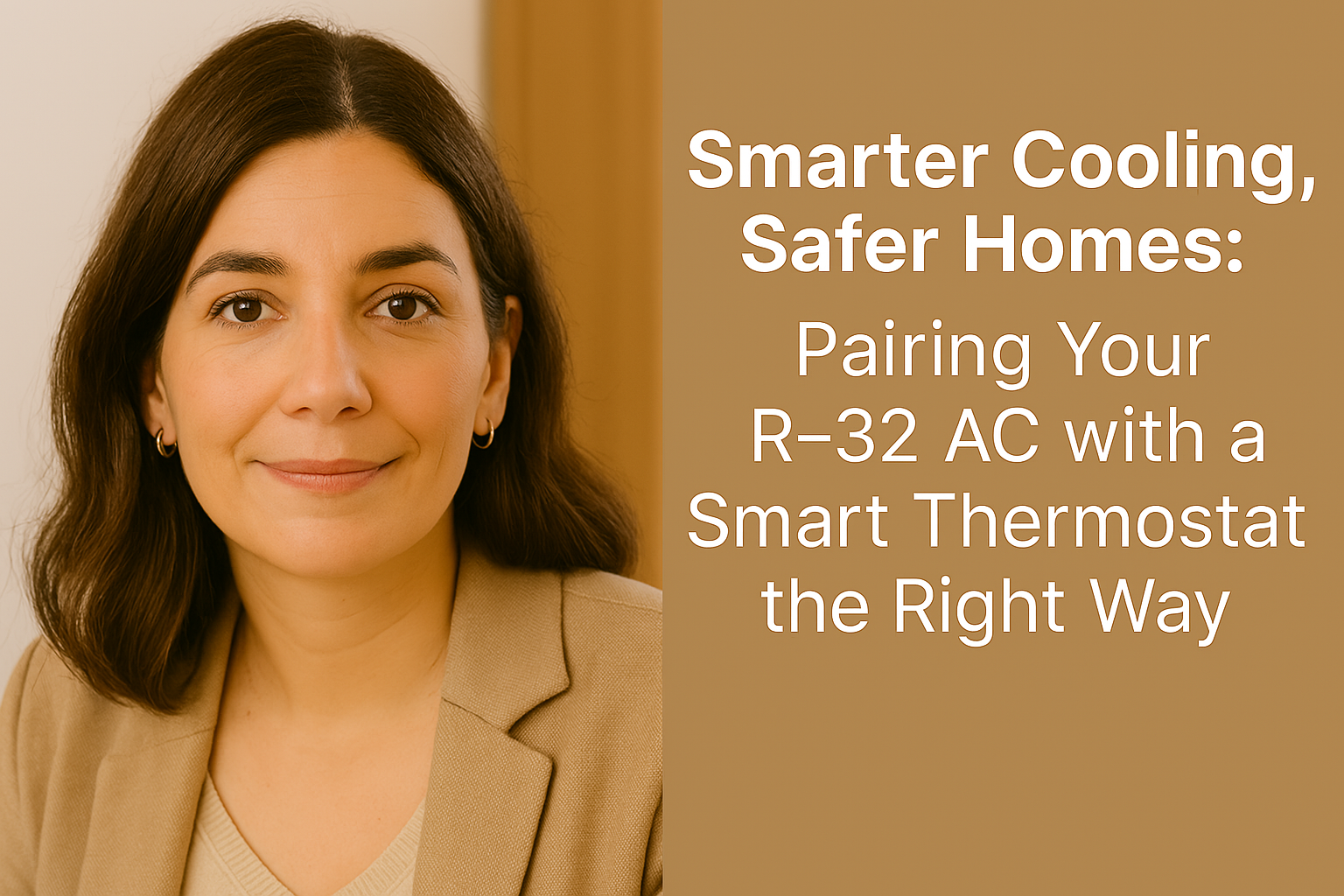💁♀️ Savvy Mavi Here!
Hey hey, home tech lovers! 🏠✨ It’s your girl Savvy Mavi, back to help you level up your comfort game. You’ve got that shiny, energy-efficient R-32 packaged unit keeping things cool — now let’s talk about getting brains behind the beauty 💡🤖.
That’s right, we’re diving into smart thermostats and how to integrate them with your R-32 system without frying a fuse or violating a building code. Whether you’re eyeing an Ecobee, Nest, or Honeywell T10, this guide’s got you covered from control board to compliance. Let’s sync it up! 📲
🔌 First Things First: Are Smart Thermostats R-32 Compatible?
The good news? 🟢 YES.
Most smart thermostats on the market today work beautifully with R-32 packaged systems, as long as:
-
Your unit includes a 24V control board
-
You're using a conventional single- or multi-stage cooling setup
-
You follow wiring best practices and NEC code
👉 Many packaged R-32 units (like Goodman or Daikin models) already support smart thermostat wiring, and if your unit includes a C-wire terminal — you’re golden.
Don’t have a C-wire? You might need to add a power extender kit or a transformer. Energy Star’s Smart Thermostat Guide breaks down compatibility and control options nicely.
📲 The Integration Checklist: What You’ll Need
Before connecting your thermostat, here’s what you should have in your smart setup arsenal:
🛠️ Hardware Must-Haves:
-
Compatible smart thermostat (Nest, Ecobee, Honeywell, etc.)
-
C-wire (or power adapter kit)
-
Screwdriver, wire strippers, and mounting tools
-
Voltage tester
-
Access to your unit’s wiring diagram
📶 Wi-Fi Setup:
-
Stable 2.4GHz network
-
Smart home assistant (Alexa, Google Home, etc., optional)
-
Mobile app installed and account created
🧯 Code & Safety Check:
-
Confirm system voltage is 24V low-voltage (not line voltage!)
-
Make sure wiring terminals match thermostat labels
-
Review NEC compliance on wire gauge, routing, and fusing
If you're unsure what voltage your current wiring is carrying, this guide from the U.S. Department of Energy is a great crash course in residential system basics.
🧩 Wiring Smart Thermostats to R-32 Units
Most R-32 packaged units have control terminals marked like this:
-
R – 24V power
-
C – Common wire (for thermostat power)
-
Y – Cooling
-
G – Fan
-
W – Heating (if applicable)
Smart thermostats often need C power to maintain a Wi-Fi connection. If your unit doesn't have a dedicated C terminal, here are three workaround options:
-
Use the G wire as a common (only if you don't need fan control)
-
Install a power extender kit — included with most smart thermostats
-
Add a 24V transformer (professional install recommended)
For a deeper wiring walkthrough, check out Ecobee’s support article on C-wire solutions.
💡 Pro Tip: Always shut off power to your HVAC system at the breaker before touching thermostat wiring! ⚡
📜 NEC Code & Installation Do’s and Don’ts
It’s not just about making the connections — it’s about making them legally and safely. Here’s what the National Electrical Code (NEC) expects when wiring your thermostat and R-32 system:
📋 NEC Compliance Quick Tips:
-
Low-voltage wiring (Class 2) must be separated from high-voltage conductors
-
Conduit is required if wires are exposed to physical damage
-
Thermostat wires must be UL-listed (CL2 or CL3 rating)
-
All wiring connections must be inside a junction box or behind a wall plate
For more wiring safety tips and code references, check out NFPA’s NEC Handbook.
⚠️ Violating NEC standards not only voids warranties, but can also create fire hazards or fail inspection — especially in new builds or flips!
📊 Benefits of Smart Thermostats + R-32 Systems
Pairing a smart thermostat with your R-32 AC doesn’t just look slick — it pays off:
💸 Energy Savings – Smart scheduling and geofencing features can cut energy use by 10–23%
📱 Remote Access – Control temps from your phone, even if you’re miles away
📊 Energy Reports – Track trends, learn usage habits, and make informed changes
🌍 Eco-Friendly Footprint – Combine R-32’s low GWP with smarter energy use for a cleaner impact
Don’t take my word for it — Consumer Reports ranked smart thermostats among the top energy-saving home upgrades year after year!
🔁 Troubleshooting Tips for Common Setup Issues
Issue: Thermostat won’t power on
🔧 Fix: Check for a proper C-wire connection or install a power extender kit
Issue: AC turns on but doesn’t cool
🔧 Fix: Verify Y wire is securely connected; check system settings in app
Issue: Intermittent Wi-Fi drops
🔧 Fix: Move router closer or install Wi-Fi range extender
Issue: Error codes or short cycling
🔧 Fix: Double-check wiring order, system compatibility, and update firmware
Still stuck? Don’t hesitate to contact your HVAC pro. You can also use Energy Star's smart thermostat rebate tool to see if local utility companies will pay you to upgrade. 💸🔥
💁♀️ Final Thoughts from Savvy Mavi
So there you have it, cool friends! ❄️✨ Whether you’re a hands-on DIYer or you’ve got a pro on speed dial, setting up a smart thermostat with your R-32 unit is one of the smartest — and most satisfying — HVAC upgrades out there.
You’ll enjoy smoother cooling, smarter energy use, and that satisfying ding when your app says you just shaved 12% off your monthly bill. 😎📉
Thinking of upgrading or need a unit that’s smart-thermostat ready out of the box? Head over to the R-32 Residential Packaged Air Conditioner collection and check out the best systems built for comfort and tech harmony.
Want to know how to extend the life of your R-32 Residential Packaged AC? Visit my Long-Term Care Plan.
Stay cool, stay savvy, and always wire with wisdom! 🧠🔌
- Savvy Mavi







